The Silent Submarines
As today’s submarines continually evolve, there is an increasing demand for even quieter radiated noise signatures. The term quiet, in submarine applications, means radiating a low level acoustic signature, with random characteristics, which is usually measured at some distance away from the submarine using a sonar array.
Here we will be discussing mostly about Collins Class submarine not because I know anything specific about it, but because that’s the only one I could find which had enough information about engine noise reduction. This will be my first article on anything military related, so pardon my mistakes.
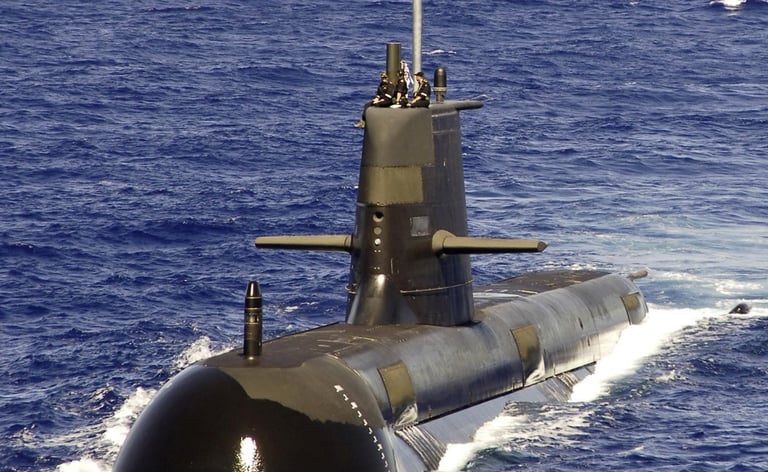

Let’s start with the sources of noise on-board a submarine.
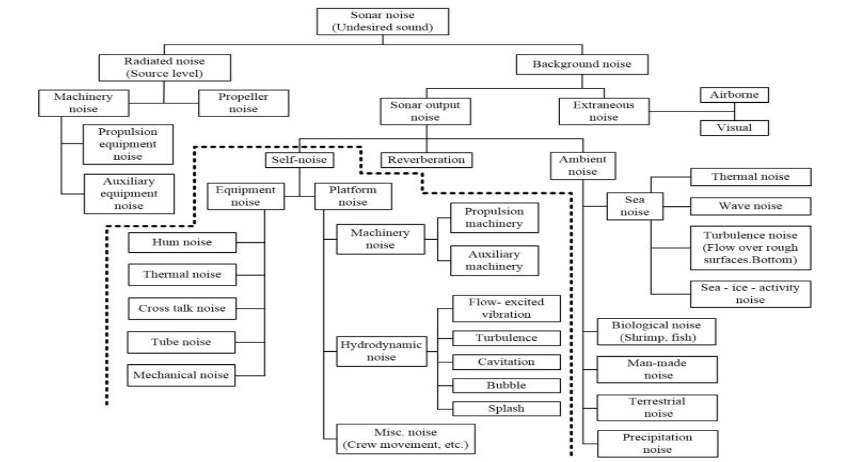

We will not be discussing all of them in order to keep the article reader friendly. So here are few-
· Most importantly- The engine
· Screw and hull
· The electro-mechanical noise
· Crew, their operations and behaviour
Engine
Each Collins Class submarine is equipped with three eighteen cylinder, four-stroke, turbo-charged diesel engines of Hedemora/Garden Island type V18B. To each engine a generator is attached, which delivers 1400kW at 440V DC. The propulsion power and additional power are taken out of the battery reserve using switched transistor techniques. The main electrical motor is a water cooled DC shunt, double armature motor with a rated power of 5250 kW.
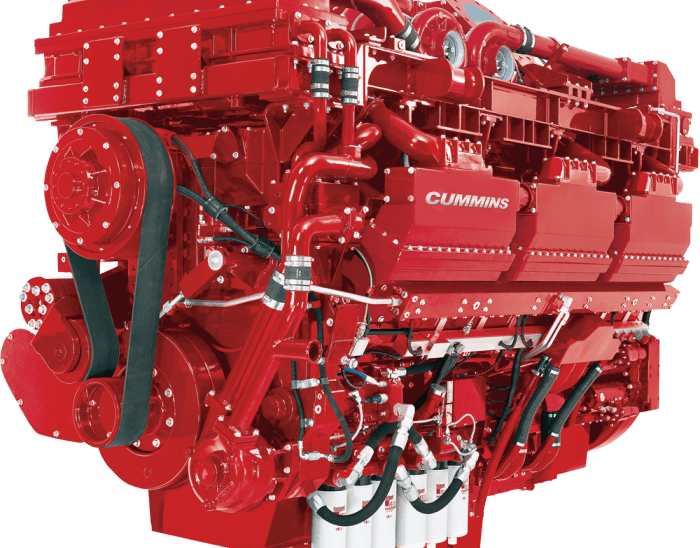

Example of a V18 marine engine, just to give the readers an idea how big they are.
The V18 engine is most balanced, almost perfect piston configuration keeping vibrations and noise in consideration. But like everything in this world, nothing is perfect. Engine does emit considerable amount of low frequency rumble which can be heard from long distances. Now it’s fairly easy for a trained sonar operator to identify what kind of engine is it from its firing order alone. The firing order is unique for every engine manufacturer and model. And that’s a secret for submarines.
There is an excellent video by Jive Turkey running a channel called sub brief. You might want to take a look at it after reading this article. Link in sources.
So in order to dampen the engine noise generated by vibration, there are active and passive noise dampening techniques.
In Passive noise dampening the drill is simple, mount the engine on ‘jiggly’ rubber like mounts which act as the shock absorbers, and they did their job just fine. Another way of doing this
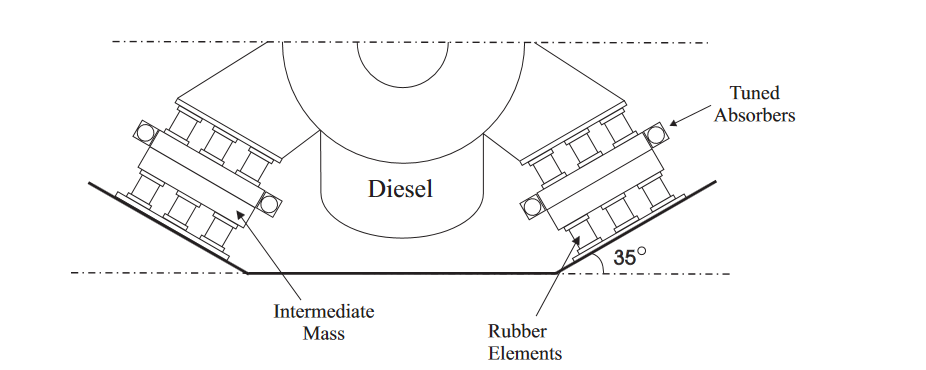


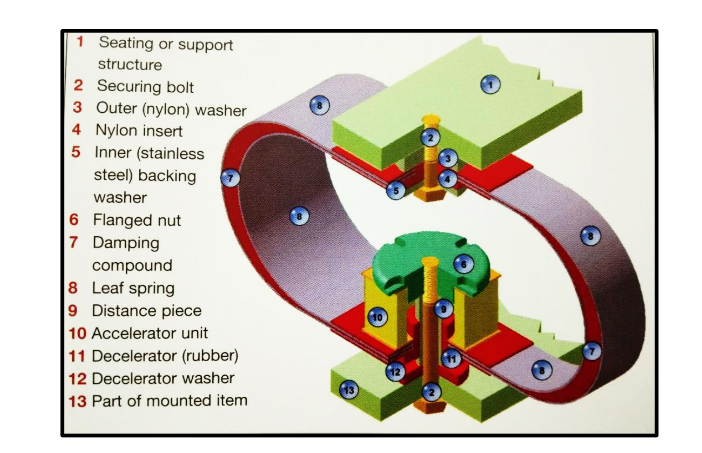
Another way of achieving isolation is Raft Mounting. Where complete noisy machinery is mounted on a cradle or raft like structure and then the structure is suspended.


Main Propulsion Machinery and Raft Arrangement on UK’s AstuteSSN
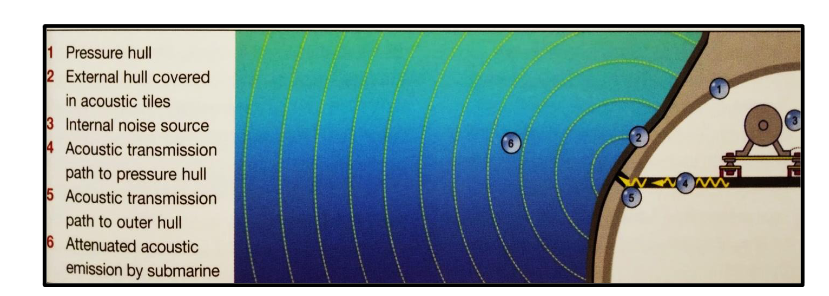

Here we can see how energy is still dissipated from mounts to the hull. We will take a look at this image again.
Still some noise slips through the hull.
This is where Active noise cancellation comes into play. Nothing out of this world, it works exactly like the noise cancellation in your car, where speakers produces the sound waves with negative interference with background noise received by strategically placed microphones, so they cancel each other without need of heavy passive dampening.
Similarly in submarines the engines are mounted on inertial actuators which work exactly like the speakers but their mechanical component is applied here instead of the acoustic component and microphones are replaced with accelerometers. The actuators cancel out the physical vibrations with same principle as the active noise cancellation.
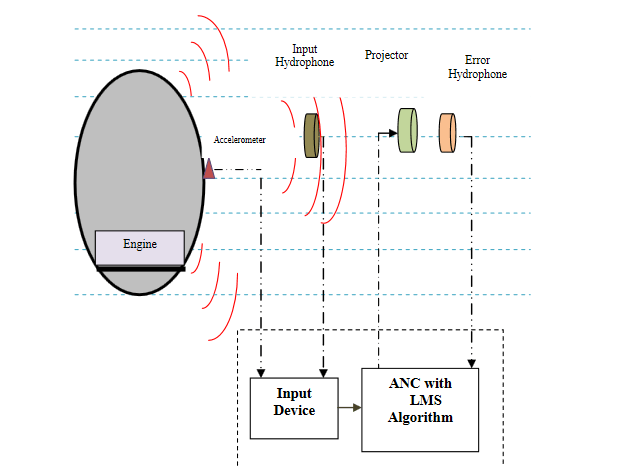

Block diagram of a typical Active Noise Cancellation system

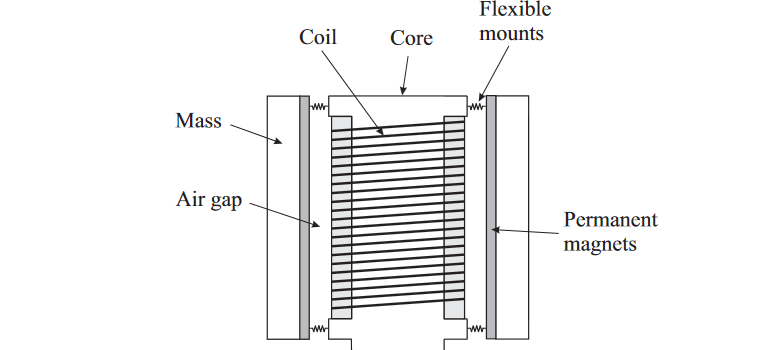
A sketch of the inertial actuator.
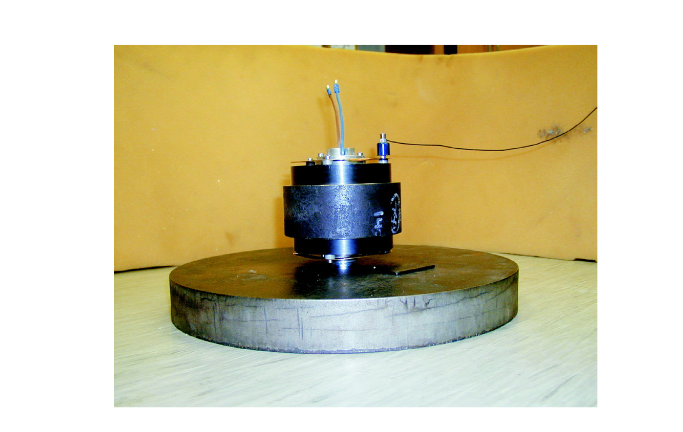

The inertial actuator used in the project. The actuator is mounted on a heavy steel mass. A metal ring is also attached to the original mass in order to increase the total mass of the mechanical system. An accelerometer can also be seen, on the top of the actuator measuring the acceleration of the moving mass.
Another aspect in stealth regarding engine is Exhaust.
The exhaust generates considerable amount of bubbles which at snorkelling depths while charging the batteries. The bubbles will create noise when they surface and pop. As you’ve expected, bigger bubble will create a bigger ‘Pop’.
So a technique called Exhaust Diffusion is used to break the bubbles into smaller ones.
*Thermal and gaseous emissions are out of scope of this article.
There are a bunch of designs employed to achieve this goal of busting the bubbles.
• Underwater snorting
• Disperse bubble plume widely
• Angled exhausts to disperse bubbles with trajectory
• Side exhausts to disperse wide and deep
• Reduce profiles of exhaust crowns and domes
Discussing them here in detail will make article cumbersome and I bet you will be bored, so for interested there is article linked in sources.
Because I don’t want you to skip what’s yet to come. Stay glued.
Propulsion systems (screw) and hull
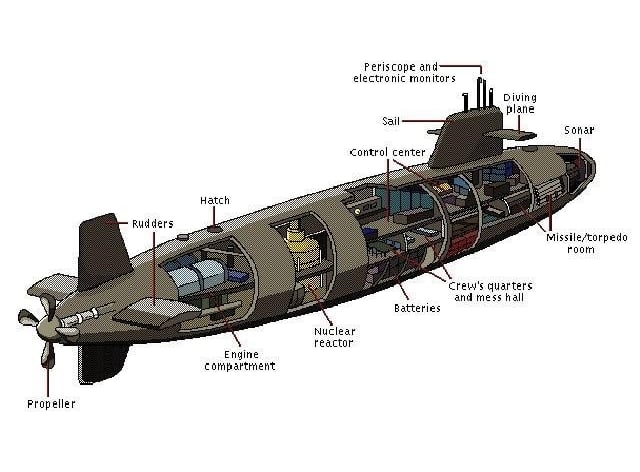

• Noise reduction by hull can be minimised by proper designing and shaping of hull. Which now a days is done in simulated environment on computers.
• Noise reduction by material choice for submarine skin, so anechoic tiles are used. Anechoic tiles are rubber or synthetic polymer tiles containing thousands of tiny voids, applied to the outer hulls of military ships and submarines, as well as anechoic chambers. Their function is twofold:
1. To absorb the sound waves of active sonar, reducing and distorting the return signal, thereby reducing its effective range.
2. To attenuate the sounds emitted from the vessel, typically its engines, to reduce the range at which it can be detected by passive sonar.


Example of distribution of wave generated around a Type 209/1300 submarine

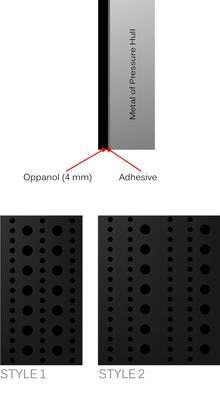


Alberich tiles as they appear on U-480 (Top), A close-up view of an Alberich tile, illustrating patterns of multiple holes with different diameters (Bottom)
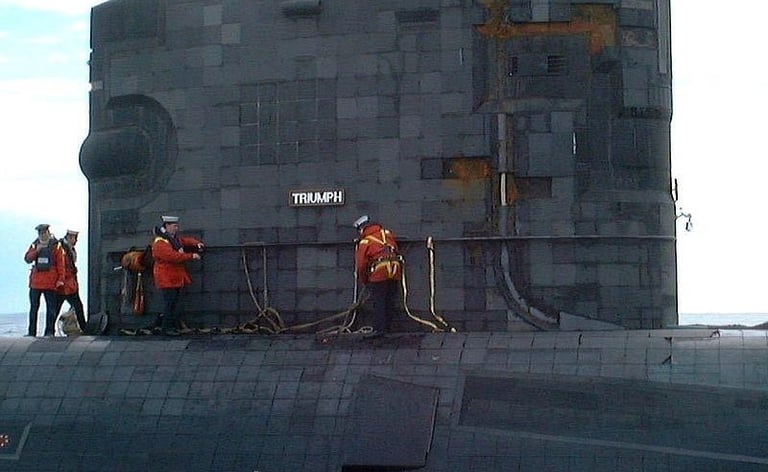

Anechoic tiles on the hull of HMS Triumph. Two patches of missing tiles are visible towards the forward edge of the sail.
Noise reduction from Propeller
Sources of noise from propeller are Hydrodynamic, cavitation, vibration.
Hydrodynamic noise
Can be reduced to some extent by shaping of the blades in propeller.


One of the declassified submarine screw design (top), Type212 screw (middle),
Kilo class screw (bottom)
Another common method is to use bigger blades with more surface area. So that with lower RPM giving similar thrust.
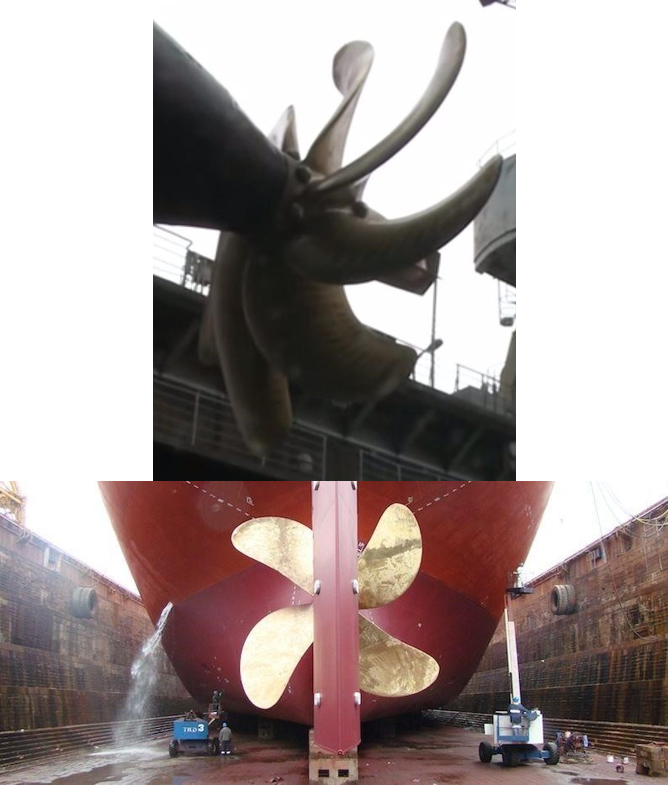

Look how the propeller on subs (top) is much bigger relative to the hull compared to the prop on shops (bottom)
But with bigger props/screws we run into the problem called Cavitation because the leading tips of propeller travels faster than the rest of the blade, even at constant angular velocity.
Cavitation in simple terms is formation of bubbles of
vacuum or Voids in water when cut by a fast moving object, here propellers.
When the bubbles collapse they create a loud ‘Pop’ which can be picked up by enemies.

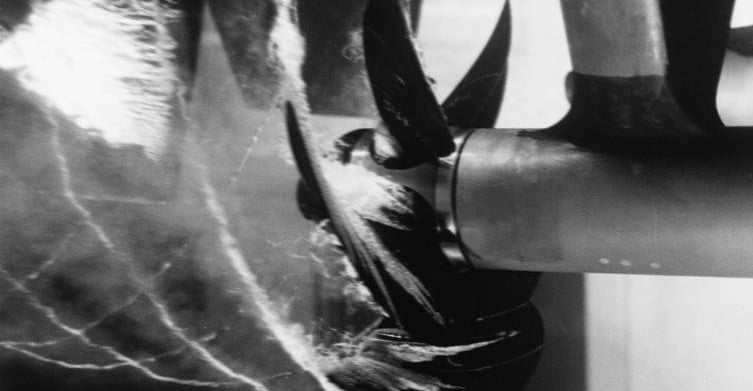
Cavitating propeller model in a water tunnel experiment.
Other consequences of Cavitation are screw pitting, disturbances to aquatic life.


Example of screw pitting
When the vacuum bubbles collapse, they also chip off some material from the propeller surface. Making them noisier and less efficient. It is termed as Pitting.
Reduction of cavitation is done by several methods like o design changes in boss cap.


Illustration of a typical propller
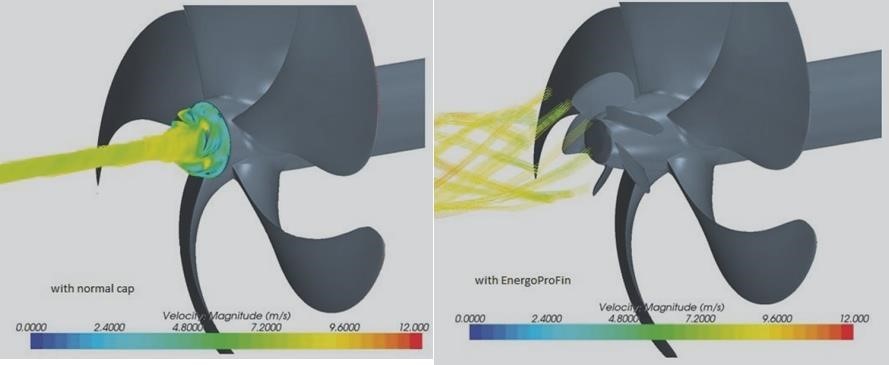

Example of German Type212 boss cap cavitation vortex reduction.
Have a look at above example images of Type212 and Kilo class notice the different boss cap design approaches for noise reduction.
Propeller blade design for minimum noise. Like bigger blade which come with the limitations of high tip speed and cavitation. So the blades are skewed keeping the same surface area with smaller propeller diameter reducing the risk of cavitation

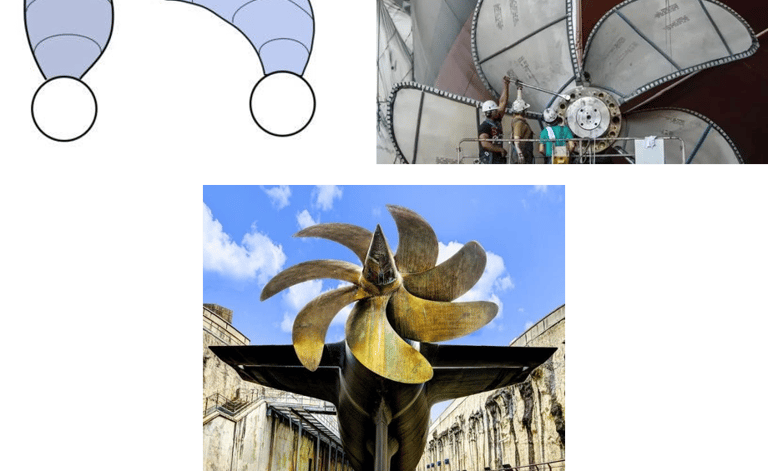
Image demonstrating the skew of propeller blades (top left), notice the differences between the skew angles on the commercial ships (top right) and nuclear submarine (bottom centre).
There are radical design approaches in propeller designs like Pumpjet propulsion, Shaft-less propulsion or Rim electric drive etc. We will gloss over them with some pics.


Pump jet propulsion on a Kilo class submarine (top), Different configuration of rim electric drive (middle), mock up of shaft less drive (bottom).
Electro-mechanical noise
The submarines’ electrical systems operate on DC 400V and auxiliary generators have capacity up to 75-100kW. Obviously for routing and transmitting that power we need a vast array of switches, relays, even wires etc.
The problem here is there are too noisy. Here are the sources of electromechanical noises in subs.
1. Contactors/relays
2. Generator units/alternators
3. Electrical motor drives
4. ‘Humming’ in wires
There are ways to mitigate those problem.
In case of relays/contactors submarines and any military application where complete silence is required, use completely specific type of contactors, called Solid state contactors.
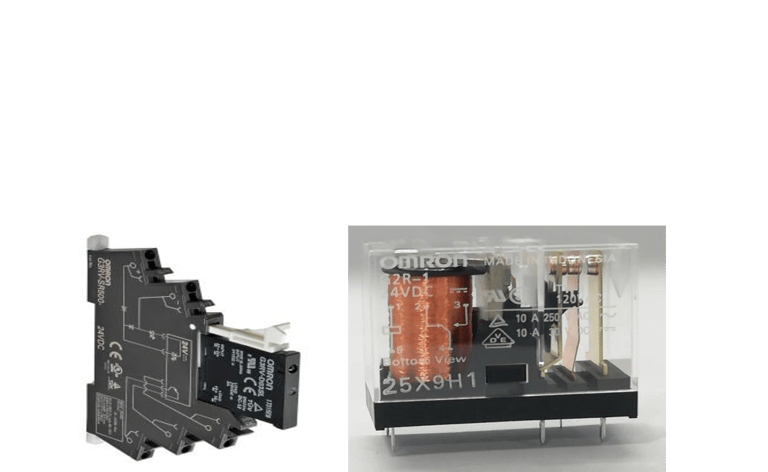

Pictures displaying two Industrial relay designs highlighting the difference between switching techniques.
Solid state relay (left), Electromechanical relay (right). Notice the internal gubbins of the mechanical relay, the orange part is copper windings for electromagnet and beside them on right are the switching elements.
When switched the normal consumer grade contactors create a loud ‘Thud’ which can be detrimental to the survival of the sub in hostile waters.
*I used contactors and relays terms interchangeably, because they are same thing just contactors are bigger and stronger.
Solid state contactors/relays use Transistors for switching power rather than the traditional electromagnet to depress the switch when current is applied to the electromagnet’s coil. There are absolutely no moving parts on solid state relays, hence longer life and higher reliability and completely silent.
As the traditional relays employ electromagnets, they too suffer from ‘hum’ (which we will discuss now).
Finally in electrical noise, we will discuss ‘Humming’. Ofcourse, we won’t go into details, because the topic of noise reduction is worth a whole semester in Electrical engineering.
Humming is caused by the vibrations in the electrical mediums such as motor windings, armatures, wires etc. caused by induction and eddy currents which have frequencies that are well within the hearing range of humans. Just switch on the ceiling fan and listen to the hum. That’s what will kill our submarine.
The frequencies at which our consumer grade electronics work is 50/60 Hertz. But the submarine electrical systems run off the 400 volt DC. As we know, the DC voltage has no oscillation from positive to negative, hence no hum, no noise, no eddy currents. Completely silent operation.
But the main propulsion motors are Induction motors.
*(yes there are AC, DC, Series wound, synchronous motors, but that’s the topic for another day).
Induction cannot run off DC. So a device called Variable Frequency Drive OR VFD is used, which works exactly like the fan regulator. Just as big as a medium sized fridge for each phase when used in ships and submarine. VFDs have carrier frequencies in realm of 1000s of hertz (KiloHertz) so, no way these will travel far into the water.
*we will wind up motors, drives, alternators under one topic since the source of noise have same concept
The generators/alternators and motors operate at 400Hz. Why? Because higher the frequency, the easier it is to dissipate into the surroundings or we term it technically as Attenuation. Also, higher frequency is a key factor in keeping motors and generators small. Since the same magnetic flux is maintained with lower turns of copper winding.
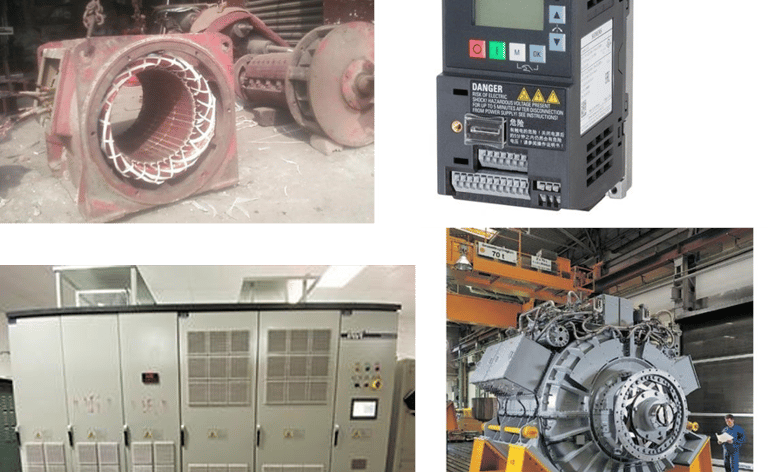

Industrial 3-phase 440V alternator unit which is part of generator with copper windings exposed (top left), example of how small and big vfds can get according to application (top right & bottom left), Image of an submarine motor illustrating the size.
